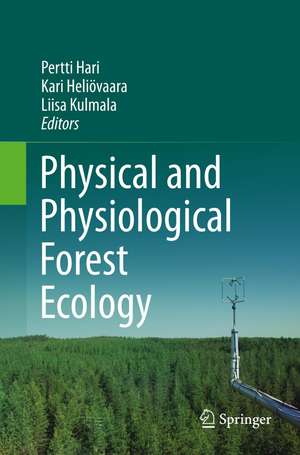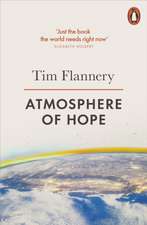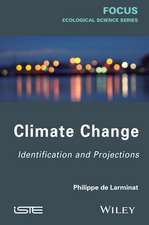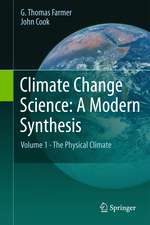Physical and Physiological Forest Ecology
Editat de Pertti Hari, Kari Heliövaara, Liisa Kulmalaen Limba Engleză Paperback – 29 ian 2015
| Toate formatele și edițiile | Preț | Express |
|---|---|---|
| Paperback (1) | 955.78 lei 38-44 zile | |
| SPRINGER NETHERLANDS – 29 ian 2015 | 955.78 lei 38-44 zile | |
| Hardback (1) | 966.51 lei 38-44 zile | |
| SPRINGER NETHERLANDS – 23 dec 2012 | 966.51 lei 38-44 zile |
Preț: 955.78 lei
Preț vechi: 1257.62 lei
-24% Nou
Puncte Express: 1434
Preț estimativ în valută:
182.91€ • 198.61$ • 153.64£
182.91€ • 198.61$ • 153.64£
Carte tipărită la comandă
Livrare economică 18-24 aprilie
Preluare comenzi: 021 569.72.76
Specificații
ISBN-13: 9789401782616
ISBN-10: 940178261X
Pagini: 548
Ilustrații: XII, 536 p.
Dimensiuni: 155 x 235 x 28 mm
Greutate: 0.76 kg
Ediția:2013
Editura: SPRINGER NETHERLANDS
Colecția Springer
Locul publicării:Dordrecht, Netherlands
ISBN-10: 940178261X
Pagini: 548
Ilustrații: XII, 536 p.
Dimensiuni: 155 x 235 x 28 mm
Greutate: 0.76 kg
Ediția:2013
Editura: SPRINGER NETHERLANDS
Colecția Springer
Locul publicării:Dordrecht, Netherlands
Public țintă
ResearchCuprins
Contents.- 1. Introduction to Physical, Physiological and Causal Forest Ecology.- 2. The Approach to Construct and Test the Theory of Forest Ecology.- 3. Environmental Factors.- 4. Processes in Living Structures.- 5. Fluxes of Carbon, Water and Nutrients.- 6. Structural Regularities in Trees.-7. Dynamics of Carbon and Nitrogen Fluxes and Pools in Forest Ecosystem.- 8. How to Utilize The Knowledge of Causal Responses? .- 9 Station for Measuring Ecosystem-Atmosphere Relations – SMEAR.- 10. The Physical and Physiological Theory of Forest Ecology and its Evaluation.- Index.
Textul de pe ultima copertă
This important contribution is the result of decades of theoretical thinking and high-value data collection by the University of Helsinki examining forest ecosystems in great detail. The ecology is dominated by a qualitative approach, e.g. species and vegetation zones, but in contrast quantitative thinking is characteristic in the exact sciences of physics and physiology. The editors have bridged the gap between ecology and the exact sciences with an interdisciplinary and quantitative approach. This book recognizes this discrepancy as a hindrance to fruitful knowledge flow between the disciplines, and that physical and physiological knowledge has been omitted from forest ecology to a great extent. Starting with the importance of mass and energy flows in the interactions between forest ecosystems and their environment, the editors and authors offer a strong contribution to the pioneer H. T. Odum and his work from over 50 years ago.
This book introduces a holistic synthesis of carbon and nitrogen fluxes in forest ecosystems from cell to stand level during the lifetime of trees. Metabolism and physical phenomena give rise to concentration, pressure and temperature differences that generate the material and energy fluxes between living organisms and their environment. The editors and authors utilize physiological, physical and anatomical background information to formulate theoretical ideas dealing with the effects of the environment and the state of enzymes, membrane pumps and pigments on metabolism. The emergent properties play an important role in the transitions from detailed to more aggregate levels in the ecosystem. Conservation of mass and energy allow the construction of dynamic models of carbon and nitrogen fluxes and pools at various levels in the hierarchy of forest ecosystems.
Testing the predictions of these theories dealing with different phenomena in forest ecosystems was completed using the versatile and extensive data measured at SMEAR I andII (Stations for Measuring Ecosystem Atmosphere Relations) and at six additional stands in Finland, and five stands in Estonia. The theories are able to predict fluxes at different levels in the forest ecosystem gaining strong corroboration in the numerous field tests. Finally, the combined results from different hierarchical levels in the forest ecosystem form the physical and physiological theory of forest ecology.
This book introduces a holistic synthesis of carbon and nitrogen fluxes in forest ecosystems from cell to stand level during the lifetime of trees. Metabolism and physical phenomena give rise to concentration, pressure and temperature differences that generate the material and energy fluxes between living organisms and their environment. The editors and authors utilize physiological, physical and anatomical background information to formulate theoretical ideas dealing with the effects of the environment and the state of enzymes, membrane pumps and pigments on metabolism. The emergent properties play an important role in the transitions from detailed to more aggregate levels in the ecosystem. Conservation of mass and energy allow the construction of dynamic models of carbon and nitrogen fluxes and pools at various levels in the hierarchy of forest ecosystems.
Testing the predictions of these theories dealing with different phenomena in forest ecosystems was completed using the versatile and extensive data measured at SMEAR I andII (Stations for Measuring Ecosystem Atmosphere Relations) and at six additional stands in Finland, and five stands in Estonia. The theories are able to predict fluxes at different levels in the forest ecosystem gaining strong corroboration in the numerous field tests. Finally, the combined results from different hierarchical levels in the forest ecosystem form the physical and physiological theory of forest ecology.
Caracteristici
Features robust predictions and explanations of the effects of climate change on forests and feedbacks from forests to climate change. Synthesizes a wealth of information from cells in trees and microbes to the ecosystem. Features a wealth of illustrations to clarify ecological phenomena and concepts in the text. Includes supplementary material: sn.pub/extras










